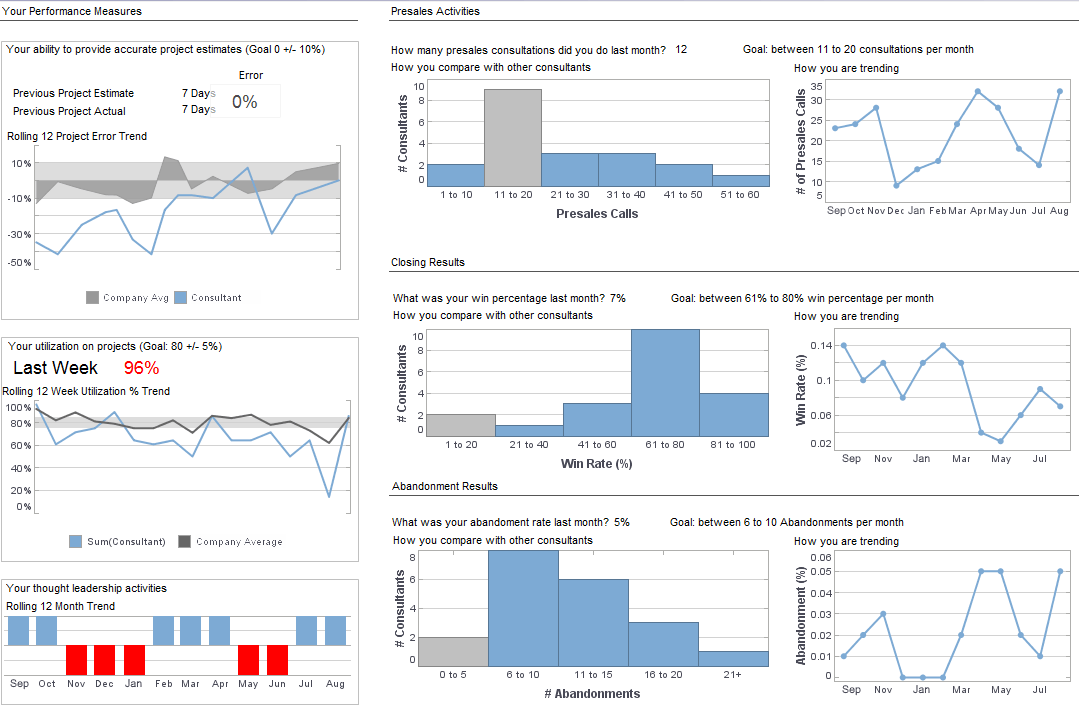Understanding and Learning Corporate Performance Management
This is the continuation of the transcript of a Webinar entitled, "Knowledge Driven Performance Management” hosted by InetSoft. The speaker is Christopher Wren, Principal Consultant at TFI Consulting.
Moving right along, the knowledge assets that are available can be hard to rank and rate because of an influx of information. In any large organization, they will have tremendous knowledge assets, especially if we add in web-based assets.
Ranking and rating content is extremely important. Normalizing ranking and rating is one of the challenges. Something like Google, for instance, ranks content based on a very simple rhythm. It’s called their page rank checker, but that’s only appropriate for one type of content and we all know that anybody who gets 57,000 hits on a search knows that the ranking system is being used to sort large amounts of content to make it easier for humans to search through the information.
We can be much more effective in terms of the ranking and rating of the information if we’re able to employ semantic models that take into account why the metrics have been selected, how they related to each other, what the knowledge assets are, and how they relate to each other. In simpler cases, we can use a very simple data mining tool that can be tuned to a particular organization and its particular needs.
| #1 Ranking: Read how InetSoft was rated #1 for user adoption in G2's user survey-based index | Read More |
Use a Variety of Techniques
So we use a variety of techniques. As the database of knowledge assets get bigger, we employ more and more sophisticated tools for doing ranking and rating, including text mining tools and semantic modeling tools. Something I forgot to point out before, that I believe will put all of this into perspective, is an example of corporate performance management. We’ve been doing a lot with government clients and some clients overseas as well. Where we’ve had the most success is with organizations that have obviously already gone down a corporate performance management path.
So we did a project like this for the City of New York. Their integrated Justice Division had adopted some corporate performance management tools. They weren’t getting necessarily as much “bang for the buck” out of what they’ve done and so we were interested in helping them grow and use the tools. We’ve also found a lot of interest in Europe in particular. I’m not sure why and I don’t want to necessarily speculate, but there’s a certain amount of process rigor with a lot of the way in which a lot of companies in Europe operate, which lent itself to applying this approach.
From my work with corporate performance management and even knowledge management, I have always expected to produce some positive and beneficial result. I could start from a situation where I have neither, corporate performance management or knowledge management, but you could build both systems simultaneously and link them. That would be a huge job though.
Read what InetSoft customers and partners have said about their selection of Style Scope for their solution for dashboard reporting. |
Organizational Alignment
If we’re talking about organizational alignment and change processes, both are huge change initiatives in and of themselves. We typically offer this as an augmentation to an existing consulting engagement where the organization has said okay, we’ve done some aspects of corporate performance management. What can we do to make it more effective?
Now rarely will you start from the beginning as organizations will typically have already done some work in corporate performance management and have some knowledge assets. It may not be a corporate knowledge management asset but they might have divisional initiatives set up.
More importantly though, they have to be willing to improve and continue to be interested. So if they’re satisfied with what they’ve got out of a corporate performance management system, at whatever level of maturity, then they’re not going to be interested in necessarily improving that.
 |
Read the top 10 reasons for selecting InetSoft as your BI partner. |
If on the other hand, they’re interested in continuous performance improvement, they are looking to have a better leverage of the existing processes and assets that they have inside of their organization. Simply put, if organizations adopt the “a learning organization” mentality, it will only benefit them.
| Previous: Seamlessly Bringing Knowledge and Corporate Performance Management Together |



